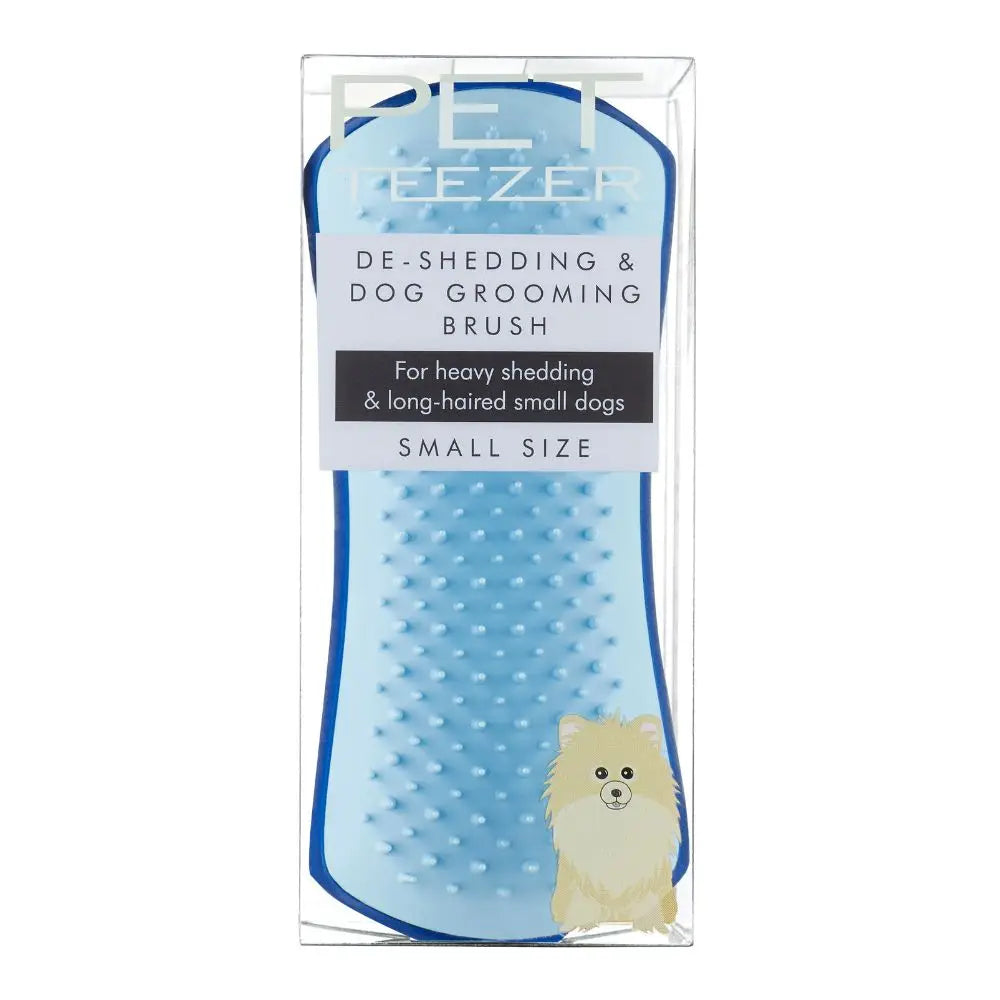Pet Teezer - De-Shedding Grooming Brush
Pet Teezer - De-Shedding Grooming Brush
check_circle Fast Shipping
check_circle Quality Products
check_circle Affordable Price
Reach out to us on ''available to order'' items via WhatsApp or email
Out of stock
Couldn't load pickup availability

Pet Teezer - De-Shedding Grooming Brush
package_2
Product Description
Product Description
Looking for a brush that will help you de-shed your dog’s coat? Then why not try the Pet Teezer De-Shedding Brush, which you can use on four types of dog hair: smooth, double, short and heavy.
The Pet Teezer De-Shedding Brush has three different lengths of teeth, each helping with something different while you de-shed and brush your dog. The longer teeth confidently reach down and gently remove dirt from your dog’s undercoat. On the other hand, the shorter teeth pick up loose hair and help to de-shed even thick, thermal undercoats. The Polymer teeth will make the whole de-shedding process gentler and more enjoyable for your dog as they reduce the risk of brush burns for your best friend.
The design of the brush is palm- and human-friendly: its ergonomic shape helps reduce wrist sprain while brushing for long periods, making your life easier and your dog happier.
This brush can be used on wet and dry coats and is super easy to clean after use. Simply lift the hair from the teeth and rinse with warm water; allow to air dry naturally with the teeth facing up. Easy or what? You might worry that the Pet Teezer De-Shedding Brush might rust after you wash it, but there’s no rusting involved like with some other grooming brushes with metal teeth.
The Pet Teezer De-Shedding Brush is available in 2 different sizes: Small (choose between Blue/Light Blue or Orange/Purple) and Large (choose between Purple/Black or Mint/Pink).
Step 1: Make sure you have a relaxed hand and wrist when picking up the de-shedding brush. This allows the brush to do the work when it engages with your dog’s coat.
Step 2: Starting on your dog’s back, begin to brush through his coat. If your dog has longer hair, you can begin to section his fur, starting with his neck and back. Make a twisting wrist action along the section area until you feel the brush gripping into the fur against the skin of the dog. This should release any loose hair. If your dog has short hair, you can keep the brush flat along your dog’s body and begin to rake the fur out gently. This shouldn’t take any wrist strain, yet you
should feel slight resistance when brushing.
Step 3: After removing most of the matting and knots from your dog’s coat, you can move on to the more sensitive areas. These sensitive areas may be the legs, around the mouth, on the back and at the base of the tail. To have more control and direction, move your hand to the top of the brush and work with a porting of the teeth.
Listed dog breeds for these four different hair types are as follows:
- Smooth Hair types: French Bulldogs, German Shorthaired Pointers, Bulldogs, Boston Terriers and Dalmatians.
- Double Hair types: Huskies, German Shepherds, Smooth Collies and Welsh Corgis.
- Short Hair types: Labradors, Basset Hounds, Pugs, Shar-Peis and Beagles.
- Heavy Hair types: Chow Chows, Rough Collies, Pekinese, St Bernards and Pomeranians.




